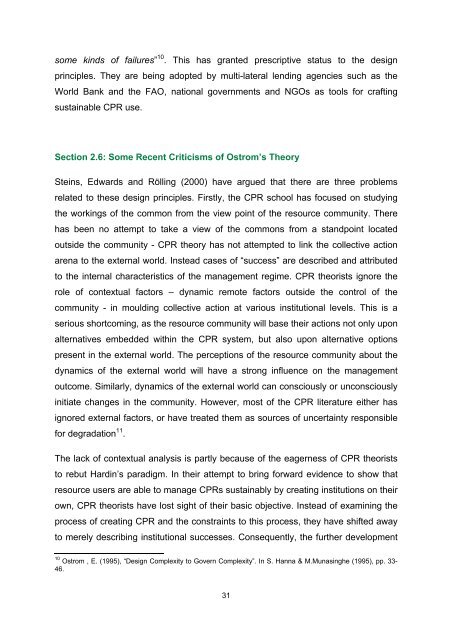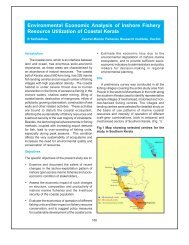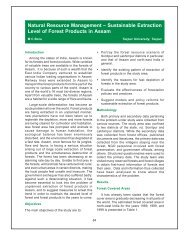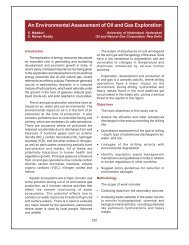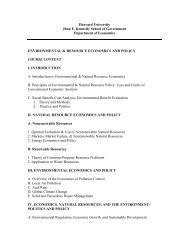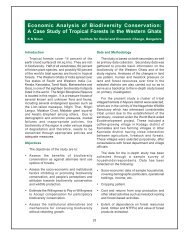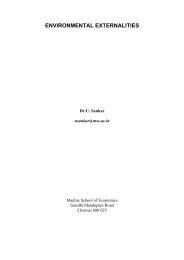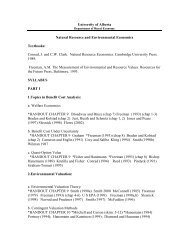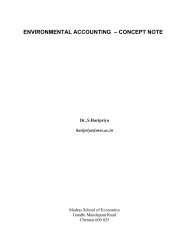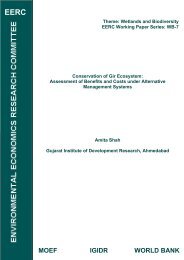PDF 3.08 MB
PDF 3.08 MB
PDF 3.08 MB
Create successful ePaper yourself
Turn your PDF publications into a flip-book with our unique Google optimized e-Paper software.
some kinds of failures” 10 . This has granted prescriptive status to the design<br />
principles. They are being adopted by multi-lateral lending agencies such as the<br />
World Bank and the FAO, national governments and NGOs as tools for crafting<br />
sustainable CPR use.<br />
Section 2.6: Some Recent Criticisms of Ostrom’s Theory<br />
Steins, Edwards and Rölling (2000) have argued that there are three problems<br />
related to these design principles. Firstly, the CPR school has focused on studying<br />
the workings of the common from the view point of the resource community. There<br />
has been no attempt to take a view of the commons from a standpoint located<br />
outside the community - CPR theory has not attempted to link the collective action<br />
arena to the external world. Instead cases of “success” are described and attributed<br />
to the internal characteristics of the management regime. CPR theorists ignore the<br />
role of contextual factors – dynamic remote factors outside the control of the<br />
community - in moulding collective action at various institutional levels. This is a<br />
serious shortcoming, as the resource community will base their actions not only upon<br />
alternatives embedded within the CPR system, but also upon alternative options<br />
present in the external world. The perceptions of the resource community about the<br />
dynamics of the external world will have a strong influence on the management<br />
outcome. Similarly, dynamics of the external world can consciously or unconsciously<br />
initiate changes in the community. However, most of the CPR literature either has<br />
ignored external factors, or have treated them as sources of uncertainty responsible<br />
for degradation 11 .<br />
The lack of contextual analysis is partly because of the eagerness of CPR theorists<br />
to rebut Hardin’s paradigm. In their attempt to bring forward evidence to show that<br />
resource users are able to manage CPRs sustainably by creating institutions on their<br />
own, CPR theorists have lost sight of their basic objective. Instead of examining the<br />
process of creating CPR and the constraints to this process, they have shifted away<br />
to merely describing institutional successes. Consequently, the further development<br />
10 Ostrom , E. (1995), “Design Complexity to Govern Complexity”. In S. Hanna & M.Munasinghe (1995), pp. 33-<br />
46.<br />
31


